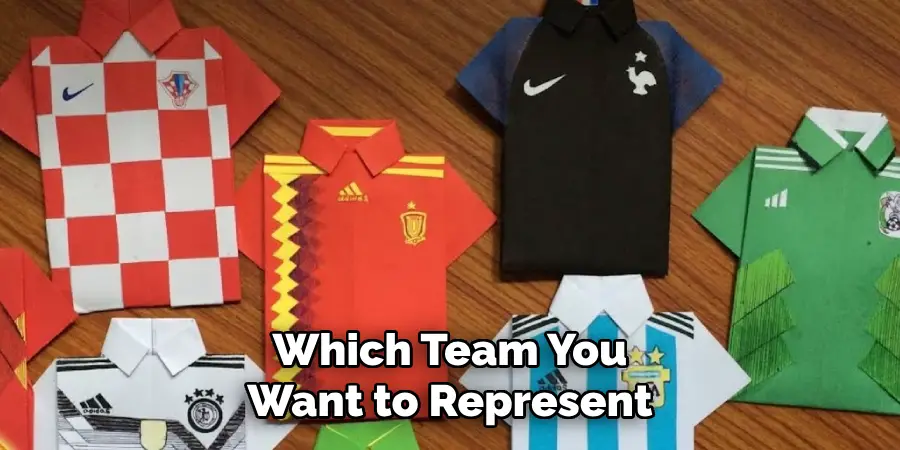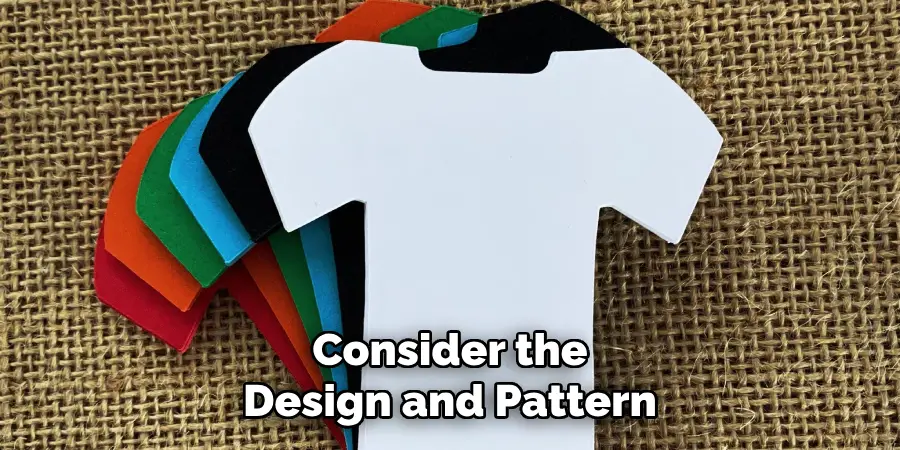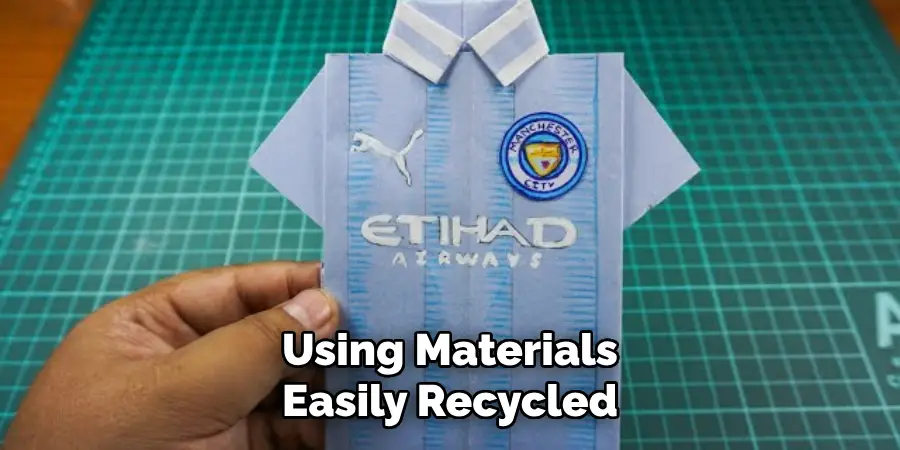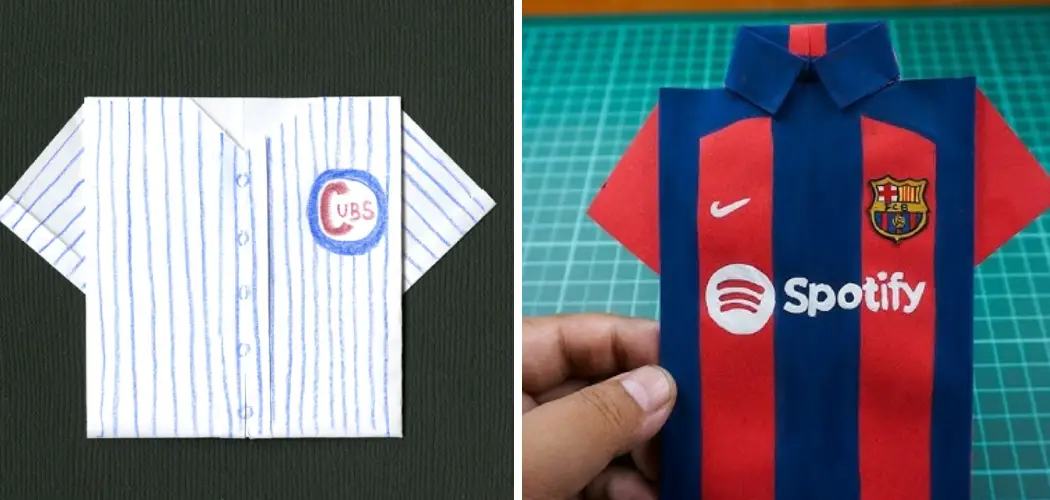Sports fans always want to show their support for their favorite team, but buying jerseys can be expensive. However, there’s a way to support your team while being budget-friendly. All you need is paper, scissors, and glue. Yes, you read that right; you can make your own paper jersey!

It’s a fun and easy craft you can do with friends and family or yourself. In this blog post, we will guide you through the simple steps on how to make a paper jersey.
Can You Make a Paper Jersey?
Have you ever thought about making your very own paper jersey? It might sound crazy, but it’s actually quite possible! With a little creativity and patience, you can create a piece of sports memorabilia that’s not only unique but eco-friendly too. Imagine showing up to a game sporting a jersey that you made entirely out of recycled paper.
It’s sure to turn heads and start conversations. Not to mention, it’s a fun and budget-friendly DIY project that anyone can try. So why not give it a shot? Start brainstorming design ideas and gather your materials. Who knows – you may just discover a hidden talent for arts and crafts.
Why Should You Make a Paper Jersey?
Have you ever considered making your own paper jersey? Sure, it may seem like a quirky and unconventional idea, but there are many benefits to creating your own wearable art piece out of paper. For one, it’s a chance to harness your creativity and showcase your style.
Plus, it’s an eco-friendly alternative to buying new clothes. Paper jerseys can be made from recycled materials and don’t contribute to the fast fashion industry’s negative environmental impact. Show off your DIY skills, make a fashion statement, and make a positive impact on the planet all at the same time by making a paper jersey.
How to Make a Paper Jersey: A Fun and Easy DIY Project
Step 1: Choose Your Team and Design
The first step is to choose which team you want to represent. You can browse online for inspiration, look at the team colors, or even check out the logo. Once you have selected your team, it’s time to create your design. Grab a piece of paper and a pencil and sketch out your ideas.

You can use different colors or add some patterns to make it more unique. Once you have finalized your design, grab another piece of paper and draw your template.
Step 2: Cut and Fold
After drawing your template, cut out the edges, sleeves, and neck of your jersey using scissors. Make sure to be careful when cutting, and always follow the dotted lines you’ve drawn. Once you’ve cut all the necessary edges, it’s time to fold the jersey. Fold it in half, making sure that the sides are even. Then, fold the sleeves and neck to form the shape of a jersey.
Step 3: Glue the Edges
If you have a glue stick, glue the edges of the jersey together. If you don’t have a glue stick, you can use regular glue, but you must be careful not to get it on your fingers. Be sure to place enough glue so that your jersey won’t fall apart. After gluing all the edges, let it dry for a couple of minutes.
Step 4: Add the Final Touches
Now it’s time to add the final touches to your paper jersey. You can add numbers, names, and logos to make it more personalized. Cut out your desired designs from another piece of paper and glue them onto the jersey. You can also add some trim, buttons, or even football lace if you want to make it more authentic. After adding the final touches, let it dry for a couple more minutes.
Step 5: Reinforce the Edges
To ensure that your paper jersey stays together, you can reinforce the edges with tape. Carefully place tape on the inside of the jersey, covering all the glued edges. This will help prevent any tears or rips in your jersey.
Step 6: Try It On and Make Adjustments
Once your paper jersey is fully assembled, it’s time to try it on. Put the jersey over your head and adjust the fit by trimming any excess paper or making any necessary alterations. You may also want to add some elastic bands inside the sleeves and bottom of the jersey for a better fit.

Step 7: Show It Off!
Congratulations, you have successfully made your very own paper jersey! Now it’s time to show it off to your friends and family. You can even wear it to support your team during their next game. You can create a unique paper jersey that will turn heads with some creativity and patience. So, have fun with it, and let your imagination run wild!
Keep in mind that this is just one way to make a paper jersey, so feel free to experiment and find what works best for you. These simple steps allow you to create your own personalized paper jersey without breaking the bank.
5 Considerations Things When You Need to Make a Paper Jersey
1. Material and Fabric
The first consideration when making a paper jersey is the material and fabric used. Paper jerseys can be made from a variety of materials, such as cardstock, construction paper, or even newspaper. It’s important to choose a material that is sturdy enough to withstand wear and tear but also flexible enough to be comfortable to wear.
2. Design and Pattern
Next, you’ll need to consider the design and pattern of your paper jersey. Will it be a simple t-shirt style or a more complex design with sleeves and collars? You can find patterns online or create your own using measurements from an existing shirt. Make sure to plan out the design carefully before cutting any paper to avoid mistakes.

3. Cutting and Assembly
Cutting and assembling the paper jersey can be a time-consuming process, so it’s important to have all the necessary tools on hand before starting. Scissors, tape, glue, and markers are commonly used for creating paper jerseys. Take your time when cutting and assembling each piece to ensure accuracy in the final product.
4. Size and Fit
Another important consideration is the size and fit of your paper jersey. Just like with traditional fabric jerseys, it’s essential to take accurate measurements for a proper fit. Remember that paper does not stretch like fabric, so you may need to make adjustments for comfort while wearing the jersey.
5. Durability
Lastly, consider the durability of your paper jersey. While it may not last as long as a traditional fabric jersey, there are steps you can take to increase its lifespan, such as reinforcing seams with extra tape or glue. It’s also important to handle the jersey carefully when wearing it or storing it away so it doesn’t rip or tear easily.
Benefits of Making a Paper Jersey
Making a paper jersey can be a fun and rewarding activity with many benefits. This DIY project encourages creativity, allowing you to showcase your individual style and design skills. Additionally, it can be a great way to relieve stress and unwind, as cutting and folding paper can be quite meditative.
Creating a paper jersey also requires attention to detail and precision, fostering important skills such as patience and focus. Furthermore, this activity is environmentally friendly, using materials easily recycled or repurposed. So, if you’re looking for a fun and eco-friendly way to explore your creative side, consider making a paper jersey!

3 Common Mistakes People Make When Trying to Make a Paper Jersey
1. Using the Wrong Materials
One of the most common mistakes people make when trying to make a paper jersey is using the wrong materials. While it may be tempting to use any type of paper you have on hand, not all papers are created equal.
For a sturdy and durable paper jersey, it is important to use thick cardstock or construction paper instead of regular printer paper. Additionally, using glue or tape instead of staples can also lead to a flimsy and easily torn jersey.
2. Not Taking Accurate Measurements
Another mistake people often make when attempting to make a paper jersey is not taking accurate measurements. It is important to measure your body or the person who will be wearing the jersey to ensure a proper fit. This includes measuring the chest, waist, hips, and arm length for long-sleeved jerseys. Skipping this step can result in an ill-fitting and uncomfortable jersey.
3. Rushing Through the Process
Making a paper jersey may seem simple, but rushing through the process can lead to mistakes and frustration. It is important to take your time and follow instructions carefully to create a well-crafted jersey. This includes properly cutting out all pieces, making precise folds and creases, and securely attaching all parts together. Rushing through these steps can result in a sloppy-looking final product that may not hold up well when worn.
Conclusion
Now that you know how to make a paper jersey, it’s time to get creative! You can make jerseys for any sport, any team, or even your own imaginary teams. With paper, scissors, and glue, the possibilities are endless. The best part of creating your paper jersey is that it’s budget-friendly, and you can do it with your friends or family. So, what are you waiting for? Grab some paper and start creating your own paper jersey today!

